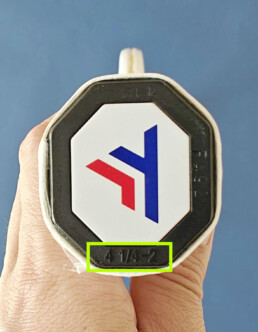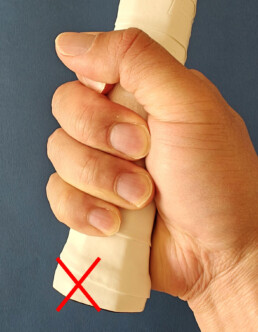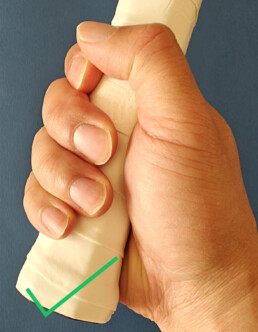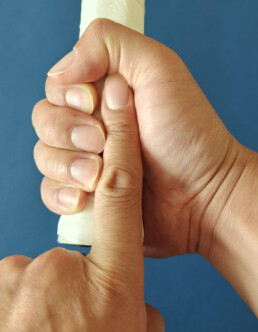Should I Downsize My Racket Grip?
When it comes to tennis gear, players often obsess over strings, frames, and string tension, but one of the most overlooked factors is grip size. Yet, the size of your racket’s grip can affect everything from control and comfort to spin and injury risk.
Whether you’re looking for more wrist snap on your forehand, struggling with fatigue during long matches, or just curious if a tweak could boost your game style, changing grip size might be worth considering. We’ll break down how grip size affects your performance, signs you might be using the wrong one, and how to decrease injury chances by switching.
Grip Sizes
0 – 4″
1 – 4 1/8””
2 – 4 1/4”
3 – 4 3/8”
4 – 4 1/2”
5 – 5″

Traditional measurement method:
One of the simplest and most reliable ways to check your grip size is with the continental grip, often called the “handshake grip.”
Grab the racquet like you’re shaking handsHold the racquet sideways and place your hand on the handle so that your index finger knuckle aligns with the top-right bevel (for right-handed players). It should feel like you’re giving your racquet a firm handshake.


Check the space between your fingers and palm
With your hand wrapped around the handle, look at the gap between your fingertips and the base of your palm.
-
If there’s about a finger’s width of space, your grip size is likely a good fit.
-
If your fingers press into your palm, the grip is too small.
-
If there’s too much space, the grip might be too large.

Modern measurement method:
Modern racket grip measurement doesn’t have a clear-cut standard like the traditional method, as players increasingly experiment with grip sizes to match their personal playing styles.
One notable trend is the move toward downsizing grip sizes, especially among professional players. The primary reason for this adjustment is to allow for more wrist action during the swing. A smaller grip can enhance the ability to generate topspin on groundstrokes, as well as provide more pronation during kick serves. This greater wrist flexibility helps players unlock additional racquet head speed and spin, giving them an edge in both power and control.
As grip size becomes more of a personal choice, it’s all about finding the balance between comfort and performance.
Notable players using smaller grip sizes relative to their hand size:
Rafa: L2 / 4 1/4 (with 2 overgrips)
Raonic: L3 / 4 3/8
Sock: L3 / 4 3/8


Players using more standard grip sizes
Federer: L3 / 4 3/8 (with 1 overgrip)
Djokovic: L3 / 4 3/8 (with 1 overgrip)
Should you switch?
Yes, If you:
- Want more wrist action (e.g., for topspin or kick serves)
- Current grip feels bulky or tiring to hold / having trouble quickly switching grips during play
- Are shifting to a modern, fast swing style (especially on forehands)
Things to look out for when downsizing:
- Arm issues (elbow, wrist, or shoulder) — smaller grips can increase strain
- Fatigue or forearm injury due to over squeezing the grip
- You hit a lot of flat shots or prefer stability over spin
Always test before fully committing
Always test going down 1 grip size at a time to avoid injury. Test a friends racket before purchasing a smaller grip to avoid disappointment. Remember its always easier to build up a grip size using sleeves and overgrips then to shave down a pallet (more on how to do that soon!)
In the meantime, check out our other articles on racket customisation to further tweak your setup.

